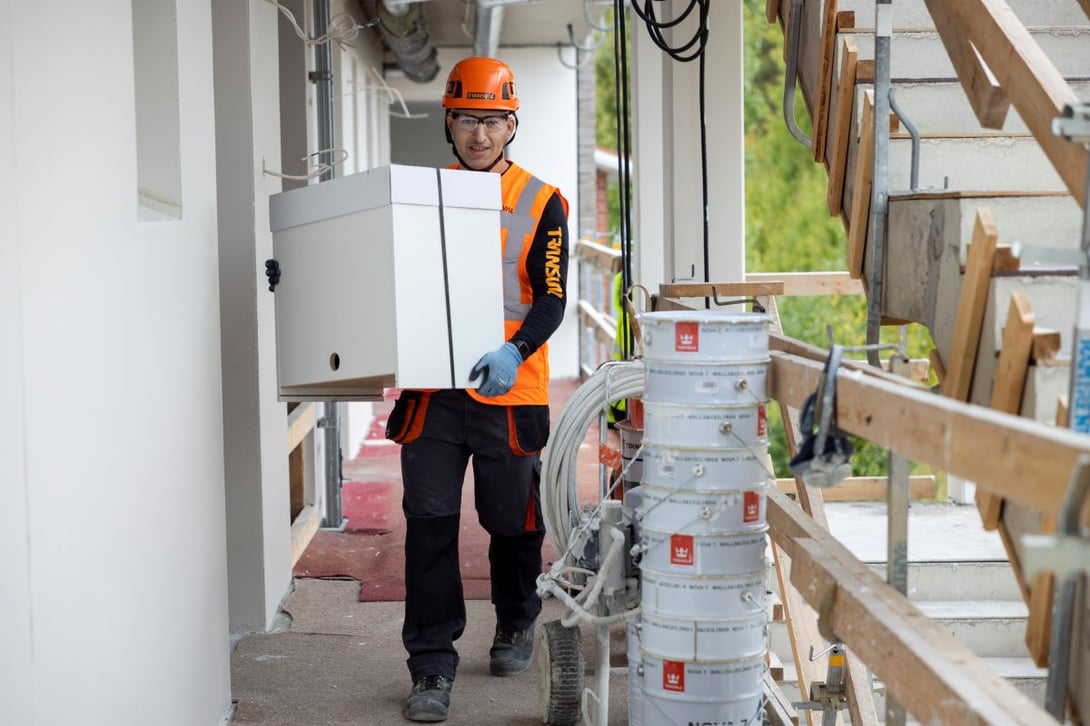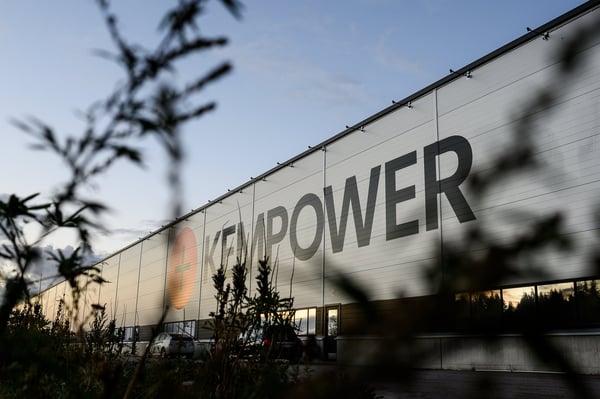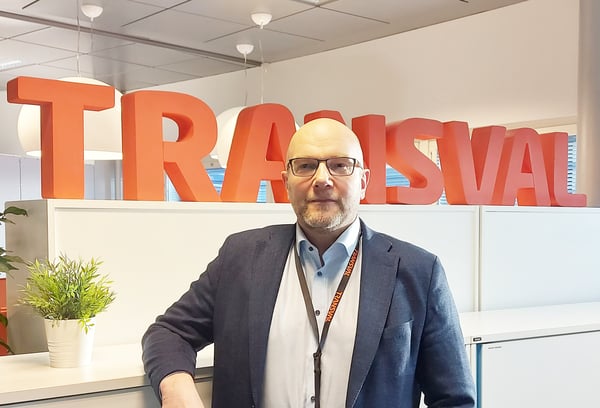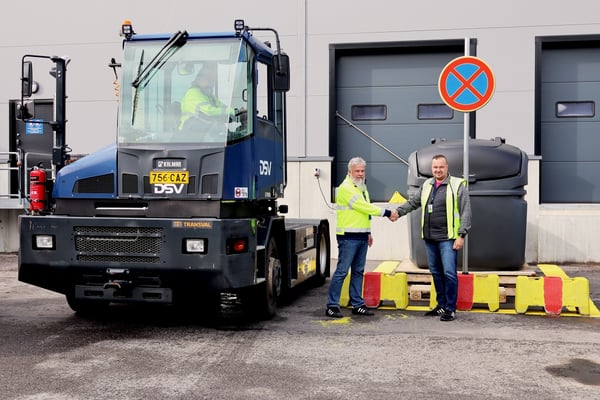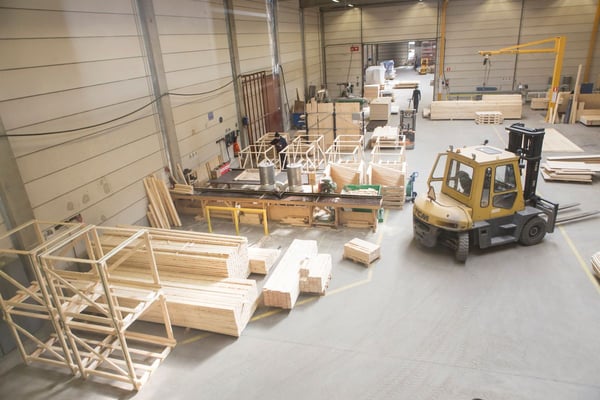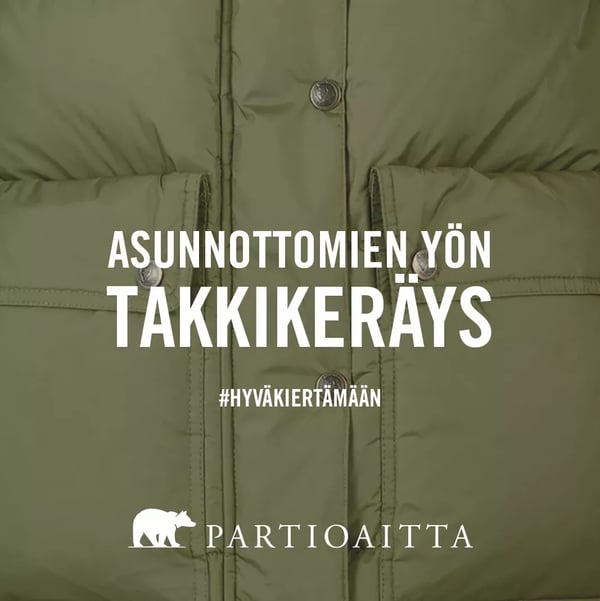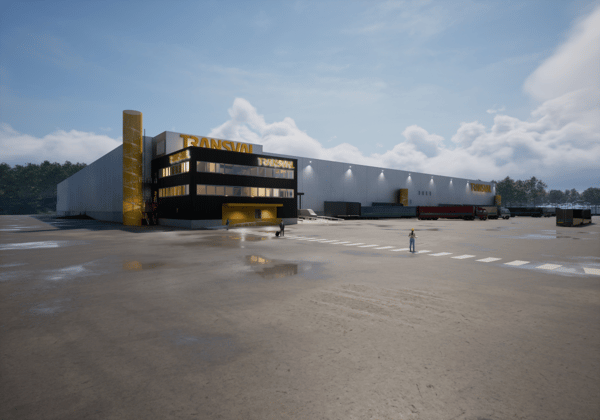Intermediate warehousing brings structure to the work in construction sites. It acts as a middleman between construction companies and suppliers, keeping materials safe until they are needed. With intermediate warehoues, you can maintain the dry chain of materials until they arrive at the installation site.
We offer intermediate warehousing in Espoo, Finland. We coordinate deliveries to the warehouse facility with suppliers and deliver materials to construction sites according to a set schedule and carry them in, when needed. We also support construction in a holistic manner.
A solution that saves time and materials
Uncontrolled deliveries cause all kinds of stress at construction sites. The materials get left in a temporary location where they are in the way, or even worse, exposed to rain or snow. When the materials are moved from one place to another, each glove print is an added cost.
Suppliers often send materials from their central warehouse directly to construction sites, and last mile services from e-commerce do not exist. There is no flexibility in the last mile, and delivery estimates are often only specified by the day, at best.
”Many of our customers are surprised by how affordable intermediate warehouse is. The price is not big when you compare it to the benefit you get and the costs you avoid. If a critical work stage at a construction site is delayed by just one day due to deliveries, intermediate warehouse would have been free,” says Juho Lappalainen, who manages the Construction Logistics service at Transval.

Picture: Juho Lappalainen tells, how intermediate warehousing helps stay on schedule and makes work more planned and coordinated.
Well-functioning intermediate warehouse offers flexibility and efficiency
Intermediate warehousing gives construction sites flexibility. We take the weight off the contractor’s shoulders by stepping in between suppliers and construction sites to coordinate and plan deliveries. In the storage, materials stay in good condition until they are needed at the site.
“Intermediate warehousing helps stay on schedule. It makes work more planned and coordinated. Construction sites can use our system to see the planning, inventory, and delivery details of their materials,” Juho Lappalainen says. 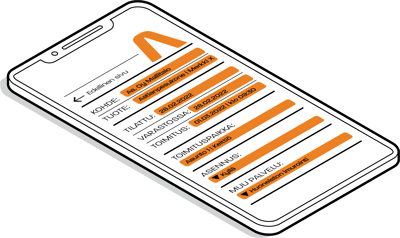 For anyone considering takt time planning, intermediate warehouse is a must. Takt time planning has recently become more popular but requires carefully planned logistics. We can use intermediate warehouse to deliver smaller takt areas, cutting down any unnecessary wait time for materials.
For anyone considering takt time planning, intermediate warehouse is a must. Takt time planning has recently become more popular but requires carefully planned logistics. We can use intermediate warehouse to deliver smaller takt areas, cutting down any unnecessary wait time for materials.
We also do apartment-specific sets in advance, meaning construction sites do not need to guess where the material goes. We can flexibly combine deliveries and only deliver full loads, for example from different takt areas, decreasing freight costs. Without intermediate storage, there may be extra freight costs as different operators bring in partially full loads.
The benefits of intermediate warehouse in a nutshell
”From my experience, I can say that intermediate warehouse is unfortunately one of the most misunderstood terms in the construction business. It is often considered a progressive option but rejected when money comes to mind. At the end of the day, intermediate warehouse is seen as an expense that can be avoided. I want to fix this unfortunately common misconception by listing the benefits of intermediate warehousing in five areas that are important to contractors,” Juho Lappalainen says.
Top five benefits of intermediate warehousing
-
Staying on schedule
- Delivering agreed set sizes at the right time
- Allowing the move to takt time planning
- Minimizing disturbances and unplanned unloading
- Managing deliveries in a browser-based system, also via mobile devices
2. Maintaining the dry chain
- Products are not exposed to elements
- Conditions for warehoused products are available in our system: temperature, relative humidity RH%
3. Improving work safety
- Construction areas in order, less warehousing on site
- Safe paths and ways of moving materials to work sites
4. Environmental responsibility
- Less driving, shorter unload times, ecological fleet, and optimized loads
- Logistics workers certified in eKierrätys waste recycling
- As part of Posti, Transval has committed to ensuring its own operations are carbon free by 2030
5. Cost savings
- Environment and recycling savings: mixed waste is the most expensive waste
- Work savings: additional transfers at construction sites decrease and employees have more time for their work. You only pay for completed units.
- Material costs: damage and waste decreases
- General costs: work management’s time is saved from coordinating logistics, schedule and lead time stay on track
Read more about our Construction Logistics offering and contact us for more information!
Juho Lappalainen, Construction Logistics
Juho.Lappalainen@transval.fi
040 578 0106
Miika Tiri, Sales, Construction Logistics
Miika.Tiri@transval.fi
040 523 2315

